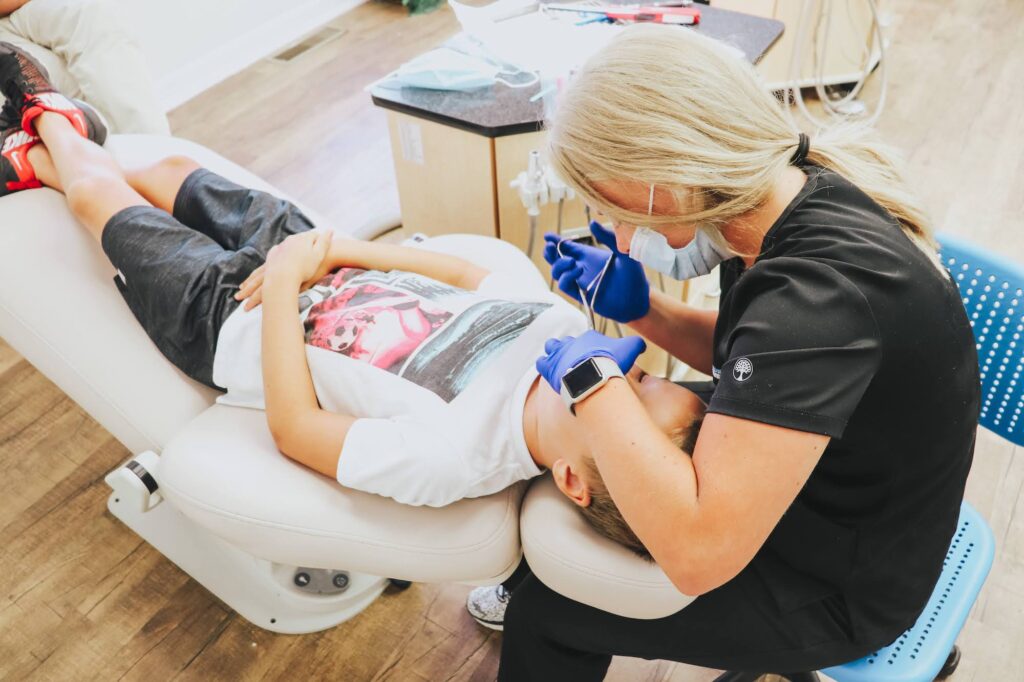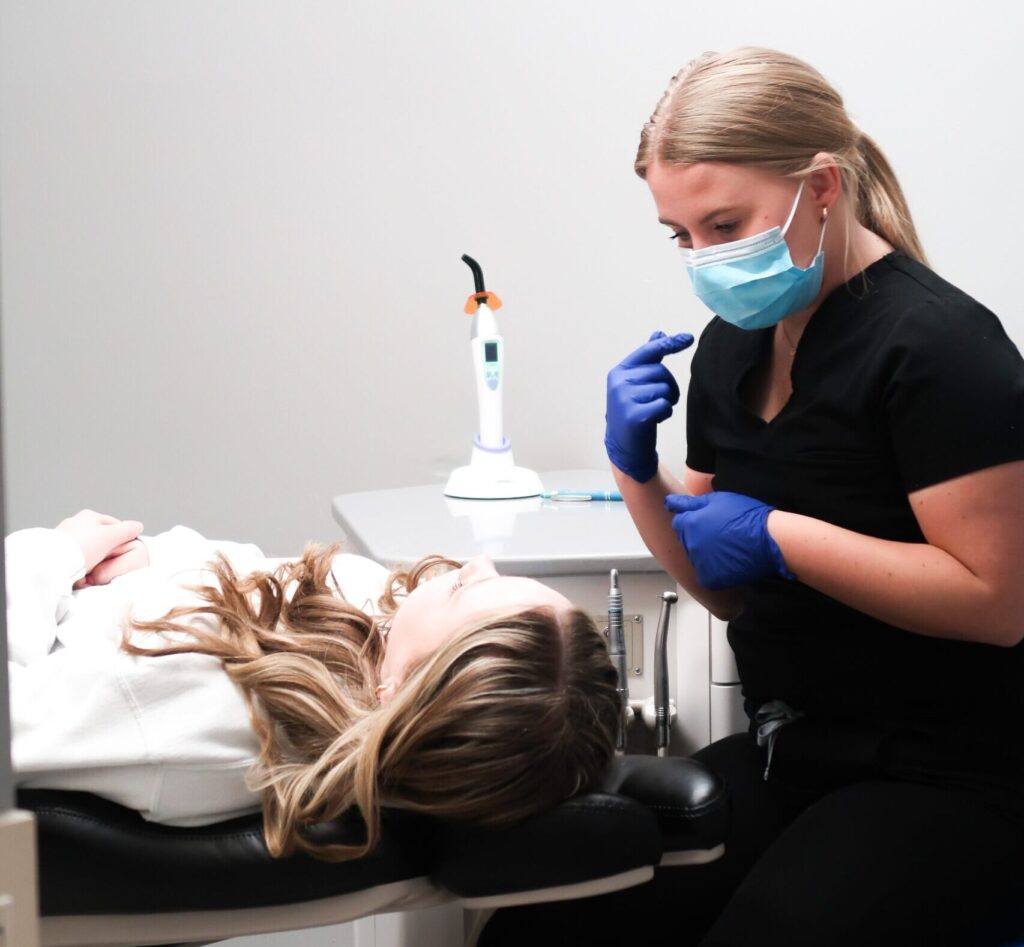At Wiesemann Orthodontics, we truly believe that if you change your smile, you can change your life. That’s why we go above and beyond to keep you in the know about the ins and outs of the orthodontic process. You may have wondered, “How Do X-Rays Track Progress In Orthodontics?” and that’s a great question! Read on to find out!
What They Are
Let’s start at the beginning — discovered all the way back in 1895 by Dr. William Conrad, x-rays are, to put it simply, just a highly energized form of light. One interesting feature of X-ray light, and the one that makes it so useful, is that it has the ability to pass through soft tissues such as skin and organs without being absorbed, while more dense material, like bone, absorbs the light.
This gives Dr. Wiesemann a nicely contrasted image with which to work. The level of detail x-rays can provide us of your teeth and jaw is essential when it comes to developing your treatment plan.
That sort of advanced imaging is what makes so much of healthcare possible, including orthodontics!
What They’re For
When you get braces, it’s important that we have a way to follow their progress. This imaging process is a precise science, and x-rays are an important part of that process. It’s a good thing, then, that they’re safe and effective!
Visualizing the Invisible
X-rays are crucial for visualizing the positions of teeth below the gum line – an essential aspect of orthodontics that ensures braces are effective in moving teeth into their correct positions.
This imaging technology provides a roadmap for Dr. Wiesemann, allowing him to forecast potential challenges and outcomes more accurately.
Periodic Comparisons
By periodically comparing X-rays taken throughout your treatment, we can provide you with a clear visual timeline of your progress. This ongoing record doesn’t just confirm the effectiveness of the current treatment approach, but it also lets us know if things aren’t going exactly right so we can adjust.
These comparative X-rays are a big part of helping us to keep up the precise control over your tooth movement we need and to ideally predict how your teeth will respond to further orthodontic adjustments.
Advanced Imaging Techniques
In today’s orthodontic care, advanced imaging techniques are key to providing top-tier treatment with high accuracy and patient comfort.
Digital X-rays in Orthodontics
Our office is equipped with advanced digital X-ray machines that produce immediate results, allowing for on-the-spot treatment planning. This quick turnaround is essential for maintaining the momentum of your orthodontic adjustments.
The clarity and detail provided by digital X-rays are even better than their pre-digital precursors, allowing Dr. Wiesemann to make even more informed and precise decisions about your orthodontic care.
Making Sense of X-Ray Images
Dr. Wiesemann has learned how to interpret the images produced by digital x-rays over years of experience and highly specialized training.
Since he can interpret these images, he can also detect potential issues early, even those that might not be visible during a regular examination. That means we can focus on actively working to better your smile, not just reacting to problems as they arise.
How It Works
This all may sound a bit technical, but it’s really just a quick and easy way for us to get a good look at what’s going on inside your mouth. Here’s an easy, step-by-step guide to the process and why it’s important for orthodontic care.
Before the X-Ray
Before we start, we’ll go over the entire process with you in person. You’ll be given a lead apron to wear, which helps to protect your body from unnecessary exposure to X-rays. It’s important for you to remove any jewelry or metal objects that could interfere with the image results.
The team at Wiesemann Orthodontics will then help you get positioned correctly at the X-ray machine. Depending on the type of X-ray, you might sit or stand. It’s crucial that you stay very still while the X-ray is taken to ensure that the images come out clear and are useful in planning your treatment.
During the X-Ray
Taking an X-ray is very quick – it usually only takes a few seconds. The machine will make a small noise while the X-ray is taken, but you won’t feel anything unusual. It’s completely painless.
Sometimes, we’ll need to take images from different angles to get a complete view of our teeth and jaw. This means you might need to reposition between shots. Each position serves a unique purpose in giving us a comprehensive view of your oral structure.
Final Steps
Once we’ve gotten the X-rays, Dr. Wiesemann will review the images. This helps give him a full picture of your dental condition, which he can use to develop a treatment plan tailored specifically to your orthodontic needs.
We’ll go over the findings with you in detail. We’ll show you any areas of concern and explain what the images mean for your treatment options. This is the perfect time to ask any questions you might have about your treatment plan or the X-ray images themselves.
Get Started Today!
We hope you feel a bit more comfortable with this part of the process after taking the time to read up on how we use X-rays to craft beautiful smiles for you and your family. All that’s left now is to get started with a free consultation! Whether you’re in Bowling Green, Whitehouse, Portland, Russellville, or somewhere in between, we’ve got you covered! We can’t wait to see you!



